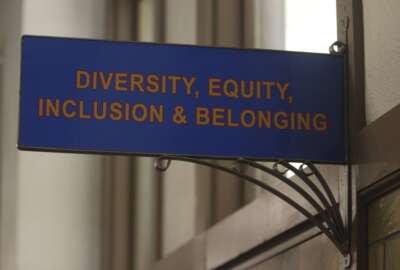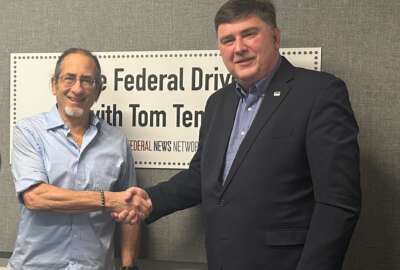Agencies see potential of putting HR systems in cloud
VA will award a contract for human resources services to a private sector cloud provider later this year. GSA still is in the planning stages, while the Coast Guard...
wfedstaff | April 17, 2015 3:38 pm
Agencies are ready to take on the next frontier of cloud computing services: human resources systems.
The General Services Administration and the Department of Veterans Affairs are among the first agencies taking a serious look at moving their HR applications to the cloud.
VA released a request for proposals to the four private-sector shared service providers-Accenture, IBM, Carasoft and Allied Technologies.
Cynthia Vaughn, director of VA’s HR line of business management office, said the agency plans to make an award by the end of the year.
GSA is a little behind VA and still is developing its acquisition strategy.
Dennis Papula, director of GSA’s HR Business Management Office in the Office of the Chief People Officer, said the agency is a shared service provider for HR systems. He said all 40 of its federal customers use GSA’s system in a private cloud.
GSA and VA are just two of what could be many agencies that could move to HR systems to cloud service providers.
500 HR systems across government
With more than 500 of these HR applications across the government, the Office of Management and Budget sees the possibility of great savings by moving these systems to shared service providers in the cloud.
Federal chief information officer Steven VanRoekel listed HR systems as one of several possible areas agencies could move to shared services by December 2012, as required in the IT budget passback guidance.
While many small agencies moved to a share service provider under the Bush administration’s HR Line of Business initiative, most large agencies continue to use internally hosted systems.
VA decided to move to the cloud because it’s internally hosted system is 48-years-old and runs on COBOL.
“There are problems with the interface with our HR solution and DoD’s DFAS solution, which is our e-payroll provider, which impacts our employees,” Vaughn said Thursday at the Federal Workplace conference in Washington sponsored by LRP Publications. “A lot of the reasons why we have problems is because of data conversations because our technology is so old we have to convert data. We have to convert data before we send it to DFAS, and they have to reconvert the data to their system and make it appropriate. The new provider will actually follow the OPM data rules so when we do that interface it should be seamless and we will not have to do any data conversion.”
She added VA created an integrated product team (IPT) made up of IT employees, business owners, contracting experts, security and privacy officials and many other stakeholders.
Business process re-engineering is key
Under the IPT, VA created a business process re-engineering working group to ensure they don’t get caught in the trap of customizing the technology instead of changing how they do HR functions.
The VA’s integrated product team is leading that contracting effort and making sure all the right clauses are in place.
Vaughn said the one thing missing in the HR environment is a template so agencies can make sure they have covered all their bases when it comes to cloud and HR systems.
GSA, meanwhile, is using many of the lessons learned from its move to email in the cloud.
Papula said GSA is keeping several things in mind as it develops an acquisition plan.
“The first one is the data migration. That’s going to require us to fully document what formats we have, structures and potential integration points. The second thing is security and privacy,” Papula said. “With any solution, security and privacy are of paramount concern, but especially when we are talking about HR solutions. We are talking about folks with their personally identifiable information. We need to be very clear with industry around cloud security and take that very seriously.”
Papula didn’t offer a timeline in terms of when or if GSA would have a solicitation out for HR in the cloud.
Coast Guard to refresh HR system in private cloud
The Coast Guard moved its HR system to a private cloud, or managed service, in 2003.
It will release a solicitation to refresh the system and cloud offering in by June, said Mike Fijalka, chief of the HR information services for the Coast Guard.
Fijalka said the Coast Guard saw immediate benefits with its HR system in the cloud, including the system becoming available 24 hours a day, seven days a week and 365 days a year, instead of the typical 14 hours a day, while the other 10 was used for maintenance.
He said moving to the cloud also gave the service opportunities that were unrealized previously.
“The data became available to end users that they had never seen before,” Fijalka said. “It had sat in a silo in a back office HR system and when you make it Internet accessible, when you have people start using it, the data starts getting better and then the organization can start using it to make better decisions.”
He said one example of this data being used differently was officers of small boat units now have the ability to see the competencies of their crew. Previously, they had no way of knowing the specific training of their workforce.
“We’ve created some reports within the HR system now and they can see that immediately, they can look across and see who needs training, what training have they had and what skill sets they have and be able to assign the right people to the right task at the right time,” Fijalka said.
All three panelists said agencies should keep a few things in mind as they move their HR systems to the cloud. It all starts with contracts, communication and change management.
Fijalka said success in moving to the cloud begins with the contract and the service level agreements (SLA).
“You got to have in there what your performance goals are, what your service level agreements are, not only if there are penalties, but carrots to the contractor you go to,” he said. “And then, definitely you have keep it up-to-date with the latest security requirements and that requires a close working relationship with your partner in the cloud environment.”
Employees must be a part of the systems planning process
As for the other two Cs, GSA’s Papula said the customers of the HR system, the employees and the employee unions, have to be part of the conversation from the beginning of the development of the acquisition.
Fijalka said users must understand why the change is important.
“In a lot of cases there may not be anything in it for them, so you have to figure out how to sell that organizationally it’s important and here’s how they can contribute to making it a success,” he said. “The other thing is you have to let them go through the grieving process: depression, anger, denial and bargaining phases. They will eventually get to acceptance if nothing else because you will beat them down after a while.”
Also, Fijalka said communication is getting easier with internal portals and social media tools such as Wikis and blogs.
Papula said part of the change management effort is re-engineering the agency’s business processes and not making the technology fit the business processes, which is a common reason for failure for IT systems.
The panel also recommended asking the shared service providers about their governance structure in terms of how they make decisions to upgrade or change the software. Understanding that approach is another important factor to put in the SLAs and ensure success.
RELATED STORIES:
EXCLUSIVE: IT budget guidance muddies OMB’s shared-service plans
OMB teeing up financial, HR systems for the cloud
With email migration done, GSA turns to other cloud services
Copyright © 2025 Federal News Network. All rights reserved. This website is not intended for users located within the European Economic Area.
Jason Miller is executive editor of Federal News Network and directs news coverage on the people, policy and programs of the federal government.
Follow @jmillerWFED






